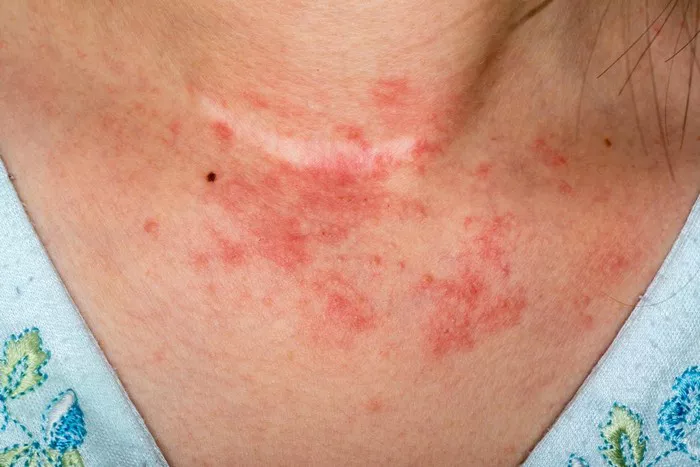Vitiligo is a skin condition that affects millions of people worldwide, characterized by the loss of pigment-producing cells (melanocytes), leading to white patches on the skin. While vitiligo is a well-recognized condition, the term “reverse vitiligo” is less commonly known. This article delves into the intriguing phenomenon of reverse vitiligo, exploring its characteristics, causes, and potential treatments.
What is Reverse Vitiligo?
Reverse vitiligo, also known as segmental vitiligo, is a variant of vitiligo that presents differently from the more common generalized form. Unlike the symmetrical and widespread depigmentation seen in conventional vitiligo, reverse vitiligo typically affects specific segments or areas of the body, often on one side. This localized pattern distinguishes reverse vitiligo from its counterpart, making it a less prevalent but equally impactful condition.
Characteristics of Reverse Vitiligo
The defining characteristic of reverse vitiligo is its unilateral distribution. This means that the depigmentation occurs on one side of the body, commonly affecting a limb, the trunk, or the face. The patches are often well-demarcated and may not spread beyond the initial segment. The rest of the skin retains its normal pigment, creating a sharp contrast that can be visually striking.
The depigmented areas in reverse vitiligo are usually stark white, lacking the melanin that gives skin its color. The patches may be small or large, and their appearance can vary widely depending on the individual. The course of reverse vitiligo can be unpredictable, with periods of stability and potential for new patches to appear over time.
Causes and Risk Factors
The exact cause of reverse vitiligo remains unclear, much like generalized vitiligo. However, researchers believe that it involves a combination of genetic predisposition and autoimmune factors. Autoimmune conditions, where the body’s immune system mistakenly attacks its own cells, are often associated with vitiligo.
In reverse vitiligo, the immune response targets melanocytes in specific areas, leading to their destruction and subsequent depigmentation. Genetic factors likely play a role in determining who develops reverse vitiligo, as it can sometimes run in families or be associated with other autoimmune diseases.
Distinguishing Reverse Vitiligo from Other Conditions
Reverse vitiligo can resemble other skin conditions, such as piebaldism or nevus depigmentosus, which also involve localized loss of skin pigment. However, the distribution and characteristics of the patches, along with medical history and examination, help distinguish reverse vitiligo from these other conditions.
Piebaldism, for example, is present from birth and features large patches of depigmented skin with well-defined borders. Nevus depigmentosus presents as stable, light-colored patches that do not increase in size over time. In contrast, reverse vitiligo can appear at any age and may evolve unpredictably.
Diagnosis and Evaluation
Diagnosing reverse vitiligo involves a thorough examination by a dermatologist or healthcare professional experienced in skin disorders. The diagnosis is primarily clinical, based on the appearance and distribution of the depigmented patches. In some cases, a skin biopsy may be performed to confirm the absence of melanocytes in the affected areas.
Additionally, patients with reverse vitiligo may undergo tests to evaluate for other autoimmune conditions, as these can coexist with vitiligo. Blood tests to assess thyroid function, autoimmune antibodies, and other markers may be recommended as part of the diagnostic workup.
Treatment Options
Managing reverse vitiligo can be challenging due to its unpredictable nature and localized distribution. Treatment approaches often focus on halting the progression of depigmentation and restoring skin color where possible. Treatment options may include:
1. Topical Treatments: Corticosteroid creams or calcineurin inhibitors can be applied to affected areas to suppress the immune response and promote repigmentation.
2. Phototherapy: Light-based therapies, such as narrowband UVB phototherapy, can stimulate melanocyte production and aid in repigmentation of the skin.
3. Surgical Interventions: Techniques such as autologous melanocyte transplantation or grafting may be considered for stable patches that do not respond to conventional therapies.
4. Cosmetic Camouflage: Makeup or self-tanning products can help conceal depigmented areas and improve cosmetic appearance.
It’s important to note that treatment outcomes in reverse vitiligo can vary widely among individuals. Some patients experience significant repigmentation with treatment, while others may have limited response.
Living with Reverse Vitiligo
Living with reverse vitiligo can have emotional and psychological impacts, especially due to its visible nature. Support groups and counseling can be valuable resources for individuals coping with the condition. Practicing sun protection, maintaining overall skin health, and adhering to treatment recommendations can help manage reverse vitiligo and optimize skin appearance.
Research and Future Directions
Ongoing research into the pathogenesis of vitiligo, including reverse vitiligo, aims to identify new therapeutic targets and personalized treatment approaches. Emerging biologic therapies and immune-modulating agents hold promise for improving outcomes in vitiligo management.
Conclusion
In conclusion, reverse vitiligo represents a unique variant of vitiligo characterized by unilateral depigmentation of the skin. While its cause and optimal management remain areas of active investigation, current treatments aim to halt disease progression and restore pigment where possible. Individuals affected by reverse vitiligo can benefit from multidisciplinary care involving dermatologists, immunologists, and psychologists to address the physical and emotional aspects of the condition. Ongoing research offers hope for more effective treatments and a deeper understanding of this intriguing dermatologic phenomenon.
Related Topics:

























